Discover North Devon’s UNESCO Biosphere Reserve
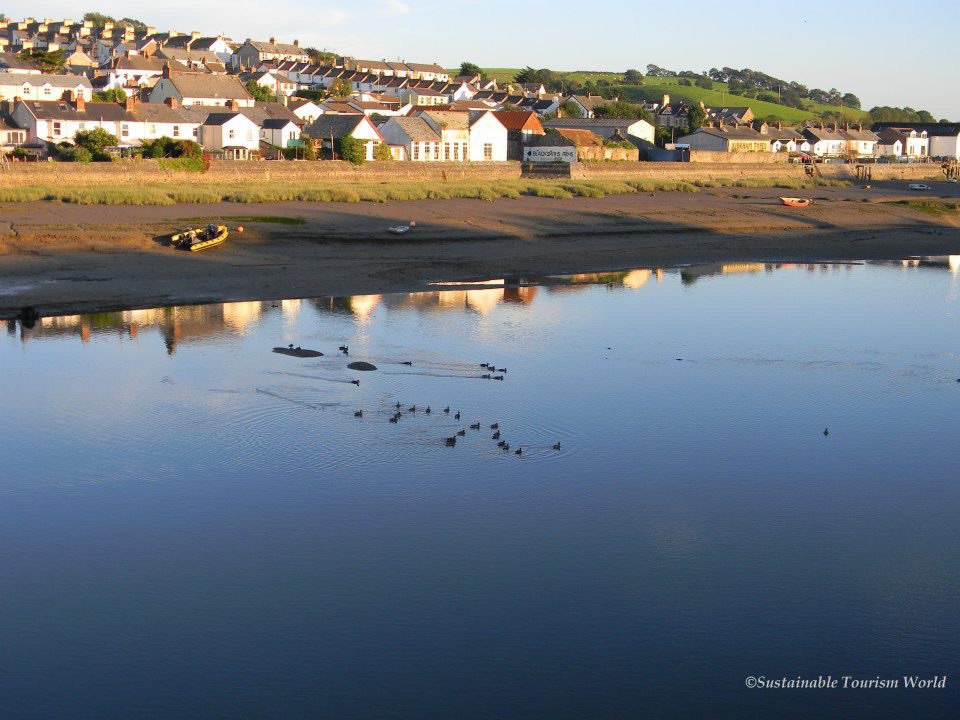
During my experience in the Uk with North Devon’s UNESCO Biosphere Reserve team, I have been involved with several sustainable tourism projects. I also had the chance to wander around and discover North Devon. Today I have a suggestion for you.
I am glad to introduce the Tarka Trail, the most significant pedestrian and cycle way in this area. It runs in a 163-mile figure of eight through landscapes little changed from those described by Henry Williamson in his
classic 1927 novel Tarka the Otter.
The Trail passes through the towns of Lynmouth, Barnstaple (where the Biosphere team is working), Bideford (a beautiful little town not far from Barnstaple), Torrington, Okehampton (location of an interesting annual farm fair), and Ilfracombe and parts of it coincide with the South West Coast Path, the Two Moors Way and the Dartmoor Way.
Read more http://www.northdevonbiosphere.org.uk/the-tarka-trail.html
Braunton countryside centre North Devon’s UNESCO Biosphere Reserve, UK

During my time at the North Devon’s UNESCO Biosphere Reserve, I have visited a very special place: Braunton Countryside Centre. It is a wonderful place where to learn about Braunton Burrows the core of North Devon’s Biosphere Reserve. The centre offers displays, information, guided walks, illustrated talks and film shows to all people interested. I have been fascinated by the passion people are showing working there.
The place is running only by very well organized volunteers and speaking with them is possible to feel how much they love and are proud where they live. Their mission is to increase the understanding, awareness and enjoyment of the coastal and farmed landscapes surrounding Braunton.
Find out more at Braunton Countryside Centre
Brunton Burrows the core of the North Devon Biosphere Reserve

Brunton Burrows is one of the largest and most impressive sand dune systems, covering 970 hectares (2328 acres). From spring to early autumn it has a continuous succession of flowering plants, over 600 species including a delightful range of orchids. The Burrows’s flora is at its best in June and July.
Appledore
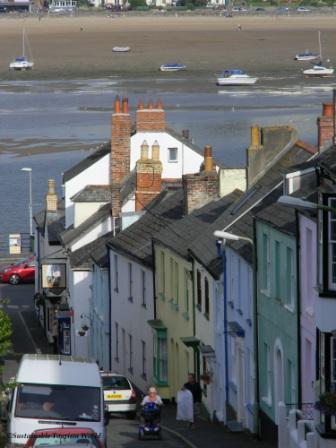
Appledore ‘s maritime history goes back over 1000 years to the defeat of Hubba the Dane by Odun, Earl of Devon, at Bloody Corner – a roadside memorial marks the spot. More history is revealed at the excellent North Devon Maritime Museum, a Georgian house in Odun Road .
Exhibits include model boats and displays on boatbuilding and shipboard life. Old Appledore is recalled through photographs and prints.
Its charming narrow streets, mainly dating from its 17th to 19th-century heyday as a port for the North America trade, focus on the Quay, which overlooks the beautiful Taw/Torridge estuary. As well as fishing boats, the Lifeboat Station, numerous pleasure craft and the August Regatta, Appledore provides wildlife and fishing trips.
Instow, Taw and Torridge Estuary
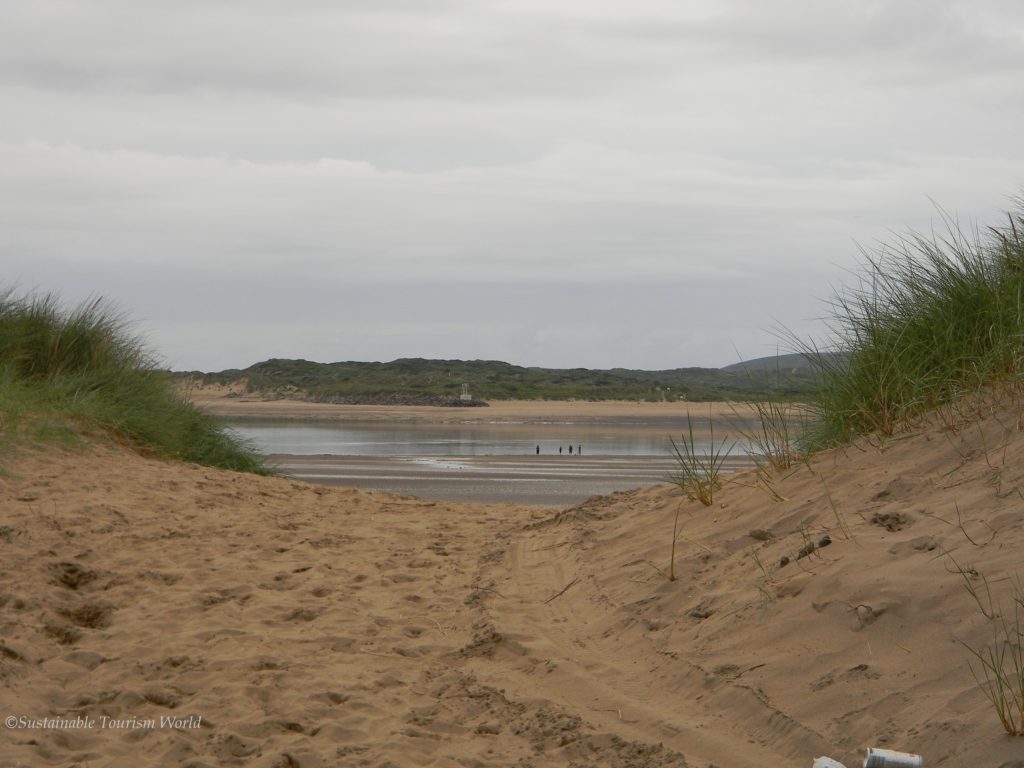
Instow’s sandy beach is easily accessed and popular with families. Since Instow’s development as a Victorian resort the beach has become the focus of the village; old Instow was centred on its parish church. Like many ancient coastal settlements, the village was sited inland, largely out of the sea and Viking raiders. Instow is the HQ of the North Devon Yacht Club – the Taw/Torridge estuary is ideal for sailing. Boat trips and boat hire are available.
Ilfracombe
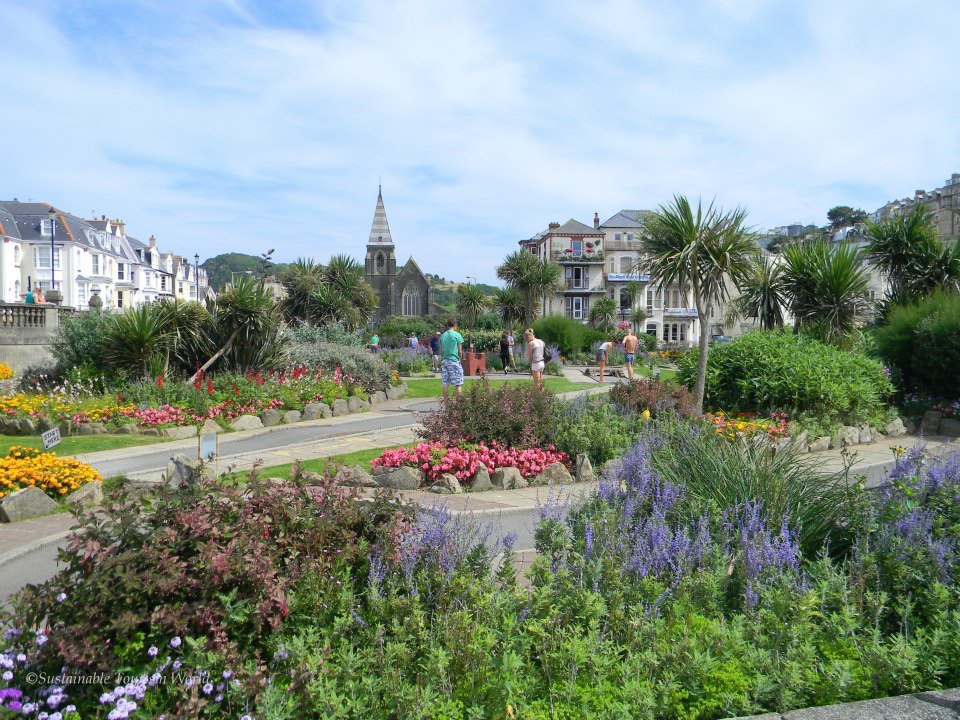
A lovely town where I found also the North Devon Coast Challenge!
Ilfracombe’s superb setting amidst the cliffs helped this important medieval port develop into North Devon’s leading Victorian resort. Centred on its beautiful harbour, where fishing boats mingle with yachts and smaller pleasure craft, Ilfracombe is predominantly Victorian in buildings and ambience.
On Lantern Hill above Ilfracombe Harbour, there was a beacon fire to guide ships even before St Nicholas Chapel was built there in the 14th century. Secularised at the Reformation, the chapel became a dwelling but continued as a lighthouse. Now restored, it has a good collection of Victorian photographs and press cutting, as well as model ships, a provides a lovely view of the harbour.
A variety of boat trips are available from the harbour. The pleasure steamers Balmoral and Waverly – the last sea-going paddle steamer in the world – offer cruises in the Bristol Channel. Wildlife cruises of various lengths combine sightseeing with opportunities to see birds, seals and dolphins. Charter boats offer fishing trips, but fishing from the pier, the harbour wall and the rocks by Capstone Hill is also popular.
Lynton and Lynmouth - The Cliff Railway
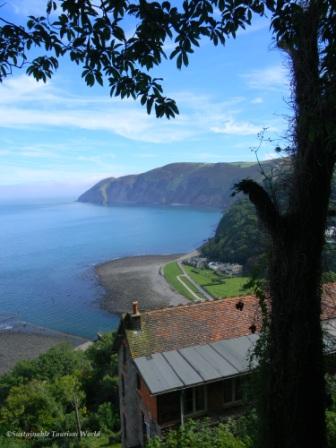
Lynton and Lynmouth are joined by the unique 1890 cliff railway at the eastern end of North Walk.
Gravity—powered by water drawn off the West Lyn, the weight of its two cars is balanced on a pulley system. The top car’s tank is filled with water, enabling it to descend while pulling up the lighter car with its empty tank 261 m from the bottom of the cliff.
Lynton prospered once it was linked to the leading railway network in 1898, and late Victorian architecture, typified by its impressive town hall (now containing the TIC), began to dominate.
Housed in an 18th-century cottage, Lynton’s museum gives a flavour of the smaller, pre-Victorian settlement.
Bideford and Westward Ho!
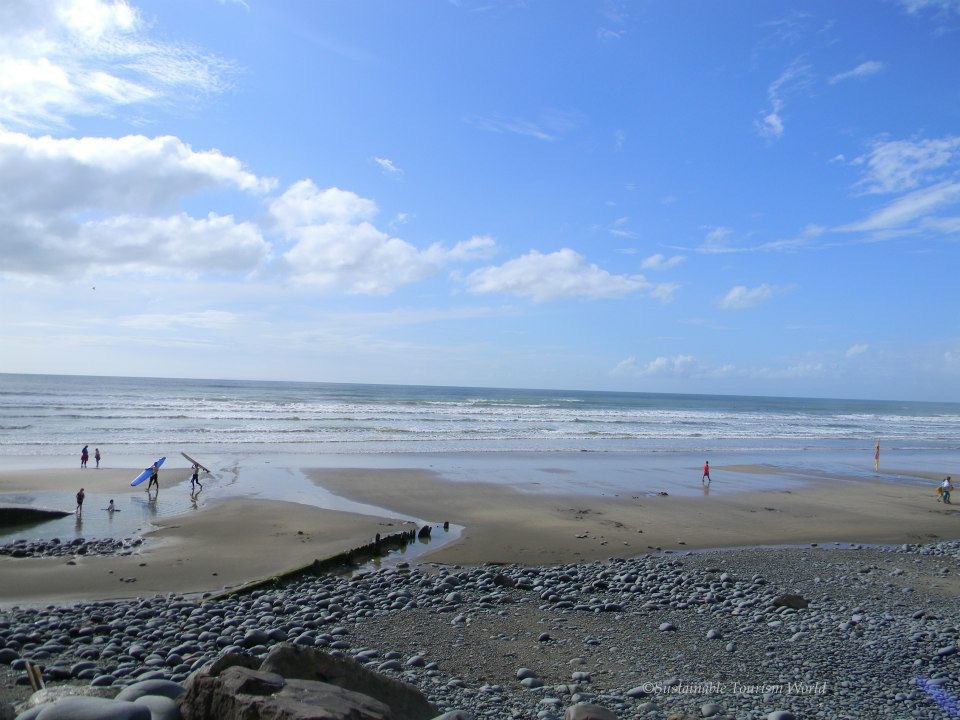
I went to Bideford and Westward Ho! on the 4th of August 2012.
It was raining cats and dogs in Bideford so we decided to move to Westward Ho! There it was raining too but only showers..in the meantime we decided to stop for a nice cheesecake!!
Bideford has a long maritime history, embracing ship-built building, fishing and trade with North America. Bideford’s long Bridge was originally built of wood in about 1280 to replace the ford beside which Bideford first developed. It was rebuilt in stone in 1535. Closer to the Long Bridge, “The Rose of Torridge” café is essentially a 17th-century timber-framed building probably contemporary with the adjacent King ‘s Arms! has been a popular resort since the Victorian boom in seaside holidays. Although no architectural gem, it has amusements, cafes and pubs aplenty and enjoys a splendid position, facing a vast beach of sand and surf. Inspired by and named after Charles Kingsley’swashbukling North Devon novel Westward Ho! (1855) the settlement was begun as late as 1863.
A great pebble ridge separates Westward Ho! The beach from Northam Burrows, 253 hectares of a grassy coastal plain, salt marsh and sand dunes. The area is rich in a variety of plants and animals, butterflies and birds including skylarks, wheatears and curlew. Local pot wallopers’ grazed their horses and sheep here: ball wallopers play golf.
Croyde Bay, North Devon, UK - surf destination.
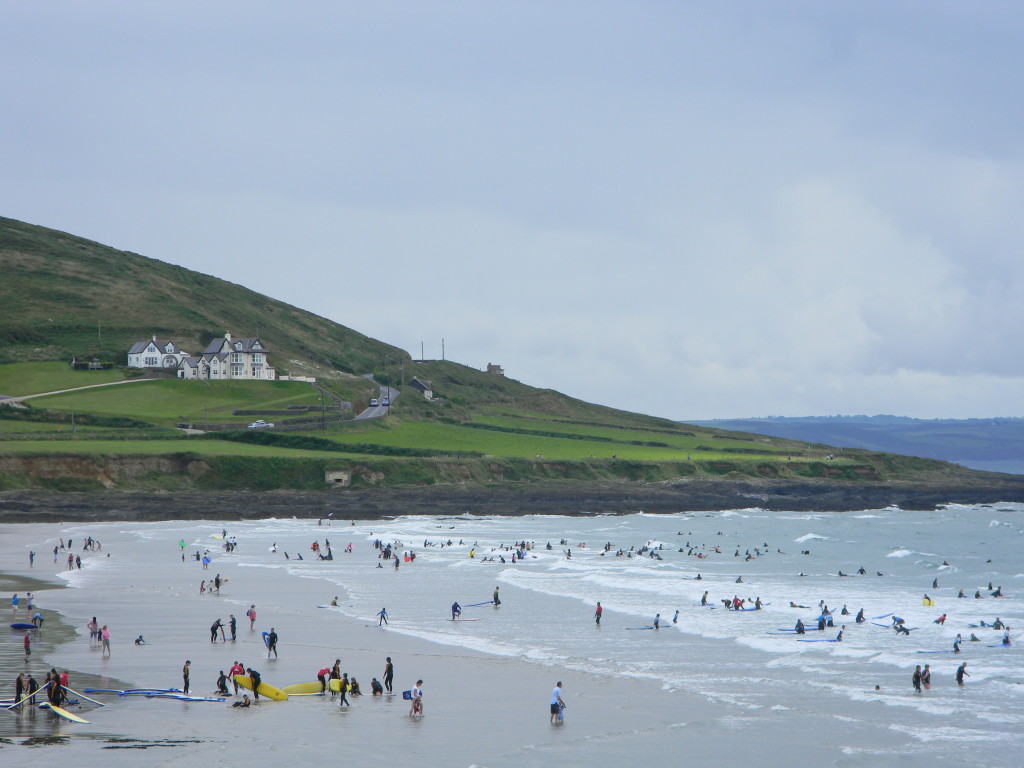
Croyde Bay is one of the best surfing beaches in England. Croyde has shops pubs and tea rooms, and some attractive thatched cottages. there’s an easy level walk from the National Trust car park to Beggy Point with excellent coastal views. Colonies of gulls as well as birds of prey and larks, and fascinating formation of shale and sandstone, add to the interest.
Beer Mill, Nature reserve
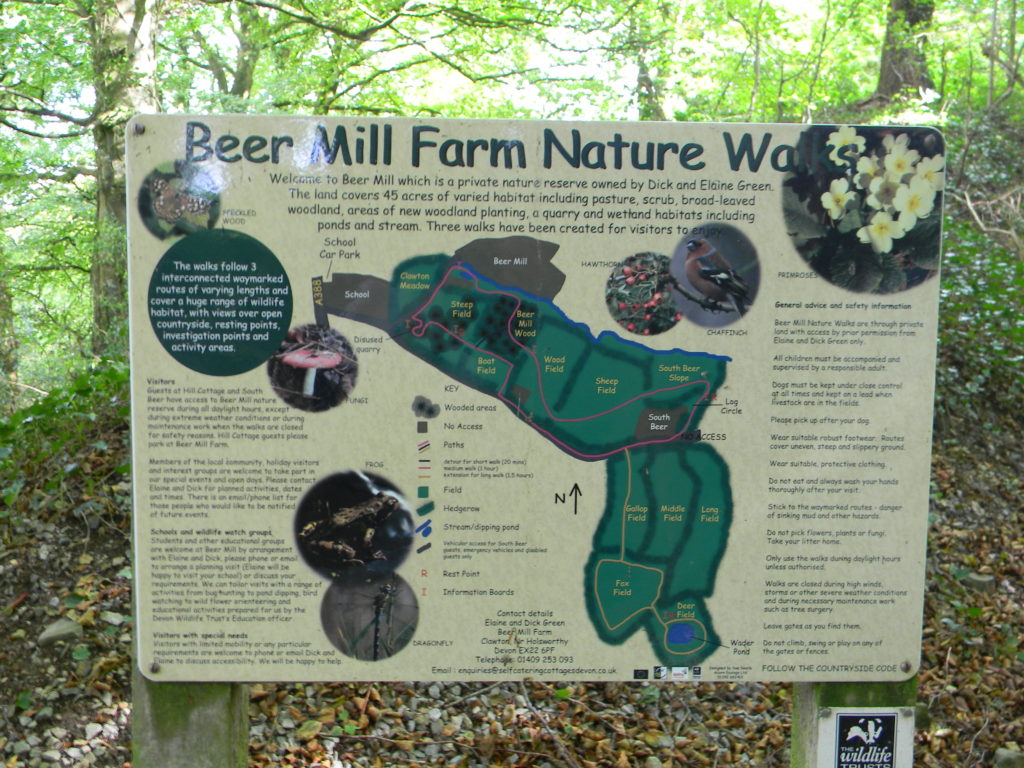
I write about the discovery of a particular special rural hide-away which I have been privileged to come across near Holsworthy, North Devon’s UNESCO Biosphere Reserve, UK. Since 2000 Dick and Elaine have been involved in sustainable tourism projects such as renting holiday accommodation. They have renovated an old stone farmhouse using eco-friendly materials.
Initially, they did not consider the option of being so adventurous, but they were seeking to improve their quality of life in rural Devon having previously lived in rural Essex.
In 2002 they expanded by developing the neighbouring stone barn to be used as holiday accommodation too. Having started “the good Life” Dick and Elaine continued to make use the land at their disposal (originally 45 acres of mostly ancient pasture woodland and wildlife ponds – fed by a small stream). They planted new trees, allowing trails to be incorporated into the scheme.
In 2008 they had the good fortune to purchase an adjacent area of 85 acres, mostly culm grassland.
In 2010 they were so happy to be awarded Nature England’s Higher Level Stewardship Scheme and in 2011 to be opening Beer Mills Nature Trails, Blagdon End.
The Devon Wildlife Trust and local workforce helped restore hedgerows, and wildlife habitat is being encouraged. There are now four nature walks which are described by Dick and Elaine, who are proud to invite visitors to enjoy this rural paradise. There is an activity centre, discreetly attached to the stone barn development, where talks mainly for school groups or young families take place.
This is one of the most beautiful and exciting places I have ever visited!
To find out more click here.

Okhempton Show
Sara – tourism sector consultant
PS. Do you want to GROW your business with a POSITIVE impact… without huge investments? Sign up for the email list by clicking on START HERE!
Or click this link https://www.sustainabletourismworld.com/start-here/ to download my INFOGRAPHIC!
